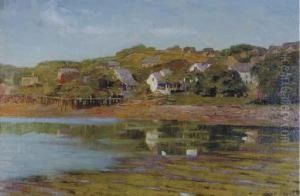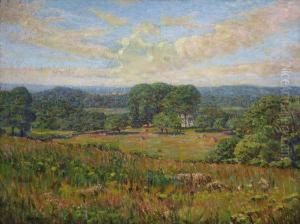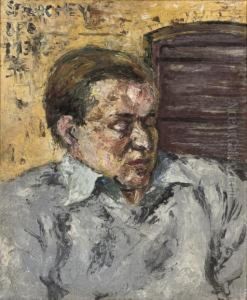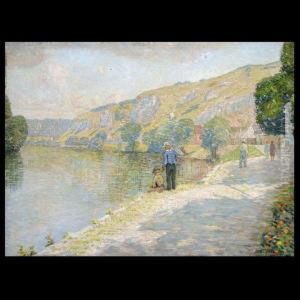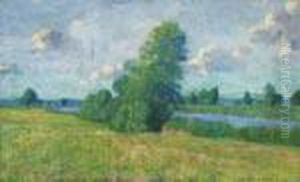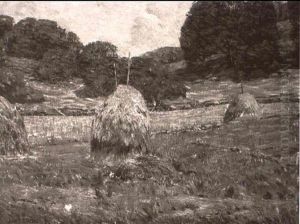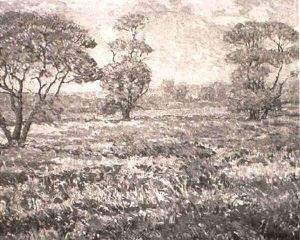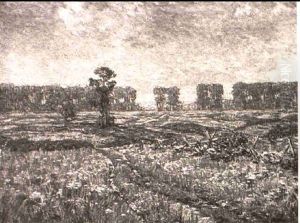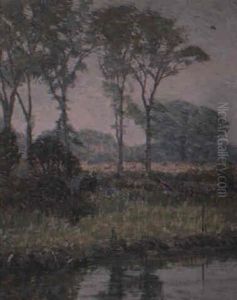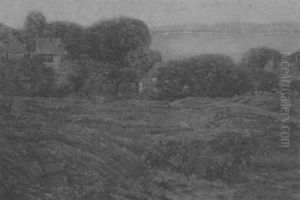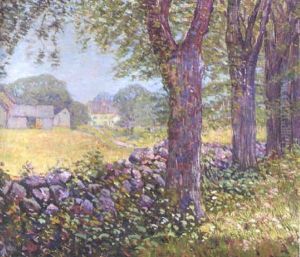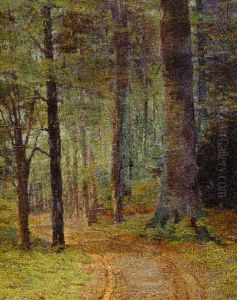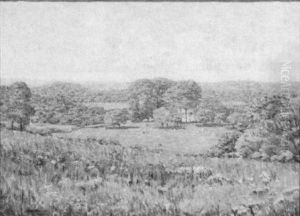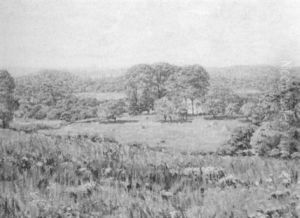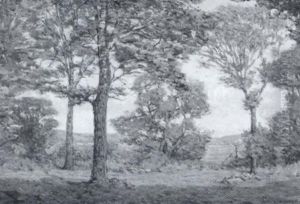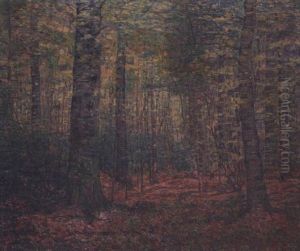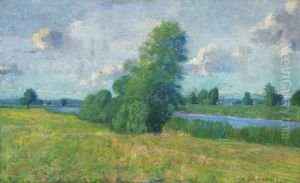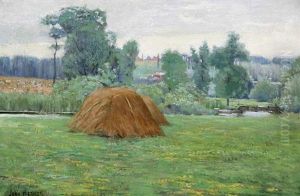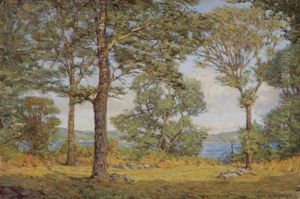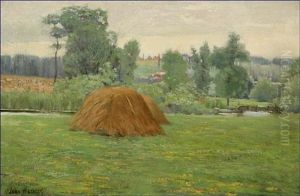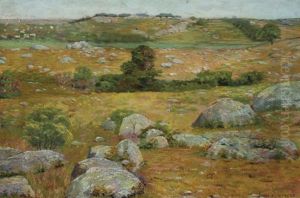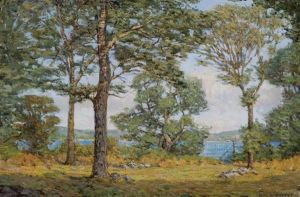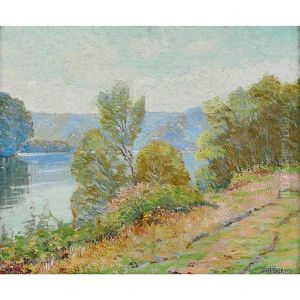John Franklin Stacey Paintings
John Franklin Stacey, an American artist known for his contributions to landscape painting, was born in 1860. Although not as universally recognized as some of his contemporaries, Stacey's work provides a unique perspective on the American landscape, imbuing it with a sense of romanticism and tranquility that was characteristic of the late 19th and early 20th centuries. His paintings often reflect the serene beauty of the American countryside, with a particular focus on the New England region.
Stacey's early life was rooted in an environment that fostered his artistic talents. He pursued formal art education, which was a common practice among aspiring artists of his time. His studies took him to several art schools in the United States, where he honed his skills in painting, particularly focusing on landscapes. He was influenced by the Hudson River School, a mid-19th century American art movement embodied by a group of landscape painters whose aesthetic vision was influenced by romanticism. Stacey's work, however, diverged in its more intimate portrayal of nature, focusing on the subtleties of light and atmosphere.
Throughout his career, Stacey participated in numerous exhibitions, gradually gaining recognition for his artistic contributions. His works were appreciated for their depth and the way they captured the essence of the American spirit through nature. Despite the changing art scenes and the rise of modernism in the early 20th century, Stacey remained committed to his style, dedicating his life to painting landscapes that offer a glimpse into the untouched beauty of America's past.
John Franklin Stacey's legacy, though not as prominent as some of his peers, remains significant for art historians and collectors who appreciate the enduring beauty of American landscape painting. His dedication to capturing the natural beauty of the United States, with a particular focus on the New England landscapes, has ensured that his works are celebrated for their contribution to the American artistic heritage. Stacey passed away in 1941, leaving behind a body of work that continues to be admired for its peaceful and idyllic representation of the American landscape.
